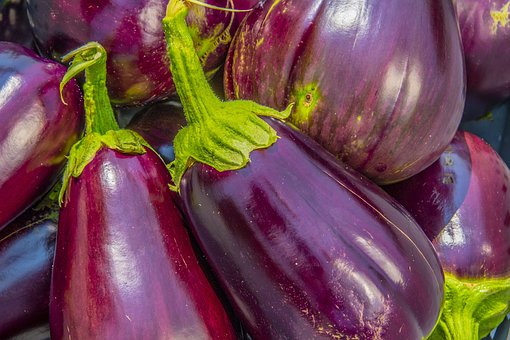
Eggplant Has Disease-Fighting Properties
Posted by SoundHealth on Friday, September, 04 2009 and filed under Nutrition
Key topics: Aubergine • Eggplant

The aubergine, or eggplant as it is also known as, contains powerful and protective qualities for health. Its phytonutrients help to remove harmful free radicals from the body, which damage cells and cause disease. They also contain antibacterial and antiviral properties.
The eggplant belongs to the nightshade family of vegetables, which also includes tomatoes, sweet peppers and potatoes. They hang from vines on a plant very much like tomatoes, and come in several different shapes, sizes and varieties. One of the most popular varieties of eggplant has a glossy and deep purple skin, with cream-colored flesh that has a slightly bitter and spongy texture.
Eggplant is high in potassium, copper, folate, magnesium and fiber. It contains flavonoids and phenols such as caffeic acid and chlorogenic acid, which as associated with fighting cancer, viruses, and harmful bacteria, and protecting against damage to cells.
Health Benefits
A Japanese study found nasunin, an anthocyanin unique to eggplant peels, had antioxidant and anti-angiogenic properties. Angiogenesis is the growth of new blood vessels in the body, and is an important natural process in the body used for healing and reproduction. Abnormal blood vessel growth, either excessive or insufficient, is now recognized as a common factor underlying many deadly and debilitating conditions, including cancer, skin diseases, age-related blindness, diabetic ulcers, cardiovascular disease, stroke, and many others.
Detoxifier
A cell study found that eggplant triggered enzymes that detoxify and remove drugs and other harmful chemical substances in the human body.
Liver Cancer
A cell study found that a component of eggplant called glycoalkaloids killed human liver cancer cells.
Tips for Using Eggplant
- To tenderize the eggplant and reduce some of its naturally occurring bitter taste, sprinkle the eggplant with salt, let it sit for 30 minutes, and then wash the salt off. This process will also remove some of its water content and make it less permeable to absorbing any oil used in cooking.
- Eggplant can be baked, roasted, steamed or fried. If baking it whole, pierce it several times with a fork to make small holes for the steam to escape. The eggplant is done when a fork goes through easily.
- Purée roasted eggplant, garlic, tahini, lemon juice and olive oil. Use it as a dip for vegetables or as a sandwich filling.
References
- Kaneyuki T, Matsubara K, Miyake T, Mori M. Antiangiogenic activity of nasunin, an antioxidant anthocyanin, in eggplant peels. J Agric Food Chem. 2005 Aug 10; 53(16): 6272-5.
- Yeh CT, Yen GC. Effect of vegetables on human phenolsulfotransferases in relation to their antioxidant activity and total phenolics. Free Radic Res. 2005 Aug; 39(8): 893-904.
- Baek EJ, Chang EY, Chang JS, Friedman M, Han JS, Kozukue N, Lee KR, Park JH. Glycoalkaloids and metabolites inhibit the growth of human colon (HT29) and liver (HepG2) cancer cells. J Agric Food Chem. 2004 May 19; 52(10): 2832-9.
Health, fitness and longevity
Based upon the principles of health
in the Qur'an and Prophetic Traditions.
HealthyMuslim.Com
There are two bounties in which
most people lose out: good health
and free time. Al-Bukhari.